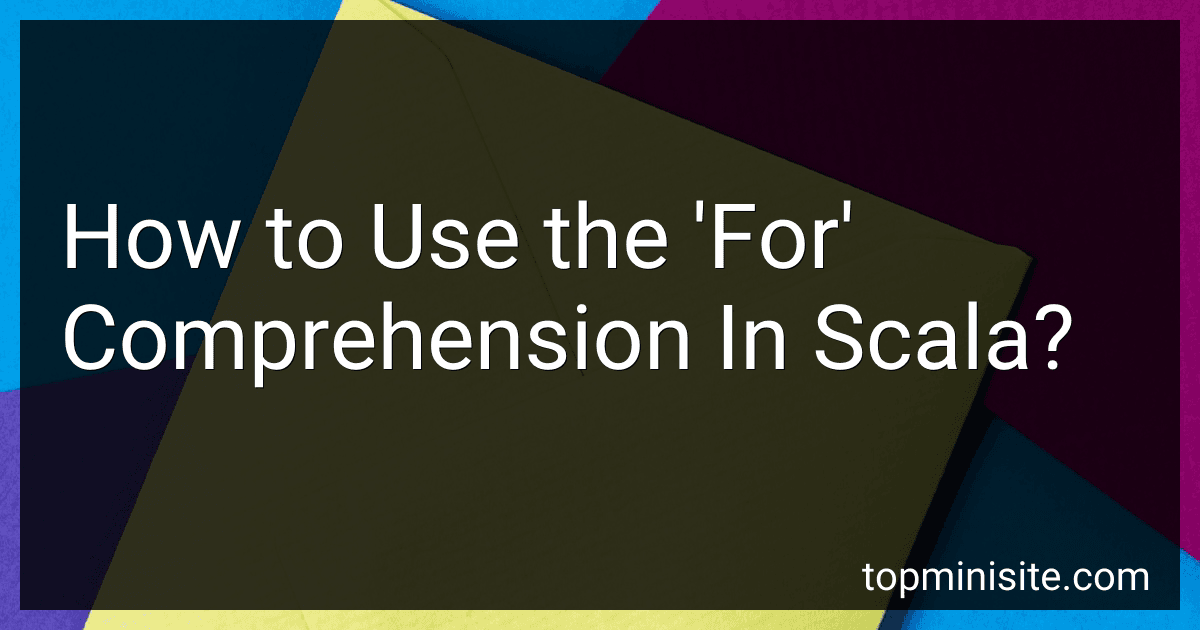Best Scala Programming Books to Buy in December 2025
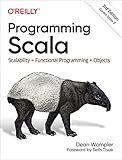
Programming Scala: Scalability = Functional Programming + Objects


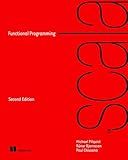
Functional Programming in Scala, Second Edition



Programming in Scala Fifth Edition


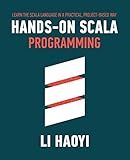
Hands-on Scala Programming: Learn Scala in a Practical, Project-Based Way


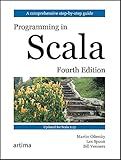
Programming in Scala


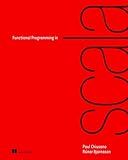
Functional Programming in Scala


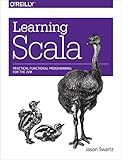
Learning Scala: Practical Functional Programming for the JVM


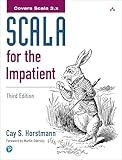
Scala for the Impatient


The 'for' comprehension in Scala allows you to express complex sequence operations in a concise and readable way. It provides a syntactic sugar for writing nested loops or operations on collections. Here is how you can use the 'for' comprehension in Scala:
- Basic Usage: You can use the 'for' comprehension to iterate over a collection: val numbers = Seq(1, 2, 3, 4, 5) for (number <- numbers) { println(number) } This will iterate over each element in the 'numbers' sequence and print it.
- Filtering: You can apply filters to the values using 'if' conditions within the 'for' comprehension: val numbers = Seq(1, 2, 3, 4, 5) for (number <- numbers if number % 2 == 0) { println(number) } This will only print the even numbers from the 'numbers' sequence.
- Yielding: The 'for' comprehension can also generate a new collection by using 'yield': val numbers = Seq(1, 2, 3, 4, 5) val doubledNumbers = for (number <- numbers) yield { number * 2 } println(doubledNumbers) This will create a new sequence that contains each element from 'numbers' multiplied by 2.
- Multiple Iterations: You can iterate over multiple collections simultaneously using multiple 'for' clauses: val names = Seq("Alice", "Bob") val numbers = Seq(1, 2, 3) for (name <- names; number <- numbers) { println(s"$name $number") } This will iterate over each name and then iterate over each number, printing a combination of name and number.
- Pattern Matching: The 'for' comprehension also supports pattern matching to filter or extract values: val people = Seq(("Alice", 25), ("Bob", 30)) for ((name, age) <- people if age > 25) { println(name) } This will print the names of people whose age is greater than 25.
These are some of the basic ways you can use the 'for' comprehension in Scala to simplify sequence operations and make your code more expressive.
How to map elements in a collection using 'for' comprehension in Scala?
In Scala, you can use the 'for' comprehension syntax to easily map elements in a collection. Here's how you can do it:
- Define a collection: Start by defining a collection, such as a list or an array, which you want to map elements from.
val numbers = List(1, 2, 3, 4, 5)
- Use the 'for' comprehension syntax: Use the 'for' keyword followed by a generator to iterate over the elements in the collection. In the generator, specify a variable that will represent each element of the collection.
val mappedNumbers = for (number <- numbers) yield number * 2
- Define the transformation: Use the 'yield' keyword followed by the transformation that you want to apply to each element of the collection. In this example, we are multiplying each number by 2.
- Access the mapped collection: The result of the 'for' comprehension will be a new collection with each element transformed based on the defined transformation. You can access the mapped collection and print its elements.
mappedNumbers.foreach(println)
The above code will print:
2 4 6 8 10
Alternatively, you can use a shorthand syntax using the map function instead of a 'for' comprehension:
val mappedNumbers = numbers.map(_ * 2)
Both approaches achieve the same result, but the 'for' comprehension provides a more readable and expressive syntax for mapping collections.
How to iterate over a range of numbers using 'for' comprehension in Scala?
In Scala, you can use a for comprehension to iterate over a range of numbers using the to or until methods. Here's an example:
for (i <- 1 to 10) { // code to execute for each iteration println(i) }
In the above example, the for comprehension iterates over the range of numbers from 1 to 10 (inclusive) and executes the code inside the curly braces for each iteration. In this case, it prints the current number i.
If you want to iterate over a range of numbers excluding the upper bound, you can use the until method instead:
for (i <- 1 until 10) { // code to execute for each iteration println(i) }
This will iterate over the range of numbers from 1 to 9, excluding 10.
You can also add additional generators or filters to the for comprehension as needed. For example, if you only want to iterate over even numbers from 1 to 10, you can use a filter:
for (i <- 1 to 10 if i % 2 == 0) { // code to execute for each iteration println(i) }
In this case, only even numbers will be printed (2, 4, 6, 8, 10).
What is the syntax to perform mapping using 'for' comprehension in Scala?
The syntax to perform mapping using 'for' comprehension in Scala is as follows:
val result = for { item <- collection } yield transformation(item)
- collection represents the original collection you want to perform mapping on.
- item represents each element of the collection in each iteration.
- transformation(item) represents the function or expression that should be applied to each element.
- result is the new collection that will be generated after the mapping.
What is the role of 'guard' clause in 'for' comprehension in Scala?
In Scala, a guard clause in a for comprehension is used to filter elements from a collection based on a specific condition. It allows you to specify a condition that must be true for an element to be included in the resulting sequence or collection.
The general syntax of a guard clause in a for comprehension is as follows:
for (variable <- collection if condition) yield expression
Here, variable represents a variable that will take on values from the collection that satisfy the condition. If the condition is true for a particular element, it will be included in the output sequence or collection. Otherwise, it will be skipped.
The guard clause can include any valid Boolean expression, allowing you to filter elements based on various conditions such as comparisons, logical operations, or even function calls.
For example, consider the following for comprehension:
val collection = List(1, 2, 3, 4, 5)
val filtered = for (n <- collection if n % 2 == 0) yield n * 2
In this case, the guard clause if n % 2 == 0 filters out odd numbers from the collection. Only the even numbers pass the condition and are included in the filtered collection. Thus, the resulting filtered collection will be List(4, 8).
The guard clause in a for comprehension helps in creating more concise and readable code by filtering out elements based on specific conditions within the comprehension itself.
How to work with 'Java Collections' using 'for' comprehension in Scala?
In Scala, you can work with Java Collections using 'for' comprehension using the following steps:
- Import the necessary Java Collection classes using the import statement at the top of your Scala file. For example, if you want to work with ArrayList, you can import it using import java.util.ArrayList.
- Convert the Java Collection to a Scala collection using the JavaConverters class. This will allow you to work with Scala-style iterators and collections. You can use the asScala method to convert a Java collection to a Scala collection. For example, if you have a Java ArrayList called javaList, you can convert it [scala](https://topminisite.com/blog/how-to-iterate-over-a-list-in-<a class=)">to a Scala List using val scalaList = javaList.asScala.toList.
- Now you can use 'for' comprehension to iterate over the Scala collection. You can use the familiar 'for' syntax to loop through the elements of the collection and perform any desired operations. For example:
val javaList = new java.util.ArrayList[String]() javaList.add("Java") javaList.add("Scala") javaList.add("Python")
val scalaList = javaList.asScala.toList
for (element <- scalaList) { println(element) }
In this example, we first created a Java ArrayList called javaList and added some elements to it. Then we converted it to a Scala List using asScala.toList. Finally, we used 'for' comprehension to loop through the elements of scalaList and print them.
Note that 'for' comprehension in Scala is more powerful than traditional 'for' loops in Java. It allows you to perform various operations on collections, such as filtering, mapping, and flattening, making it a versatile tool for working with collections.
What is the difference between 'yield' and 'map' in 'for' comprehension in Scala?
The 'yield' keyword is used in Scala's 'for' comprehension syntax to create a new collection by transforming or filtering the elements of an existing collection. It allows you to generate a new collection using the elements of the original collection in a structured and concise way.
On the other hand, the 'map' function is a higher-order function in Scala that takes a function as an argument and applies it to each element of a collection, returning a new collection of the transformed elements. The 'map' function is not limited to 'for' comprehensions and can be used with any collection.
In a 'for' comprehension, the 'yield' keyword is used to indicate transformation or filtering of elements, while 'map' is used to invoke a function on each element of the collection. 'map' is more flexible as it can be used with any collection and does not require the use of 'for' comprehensions.
